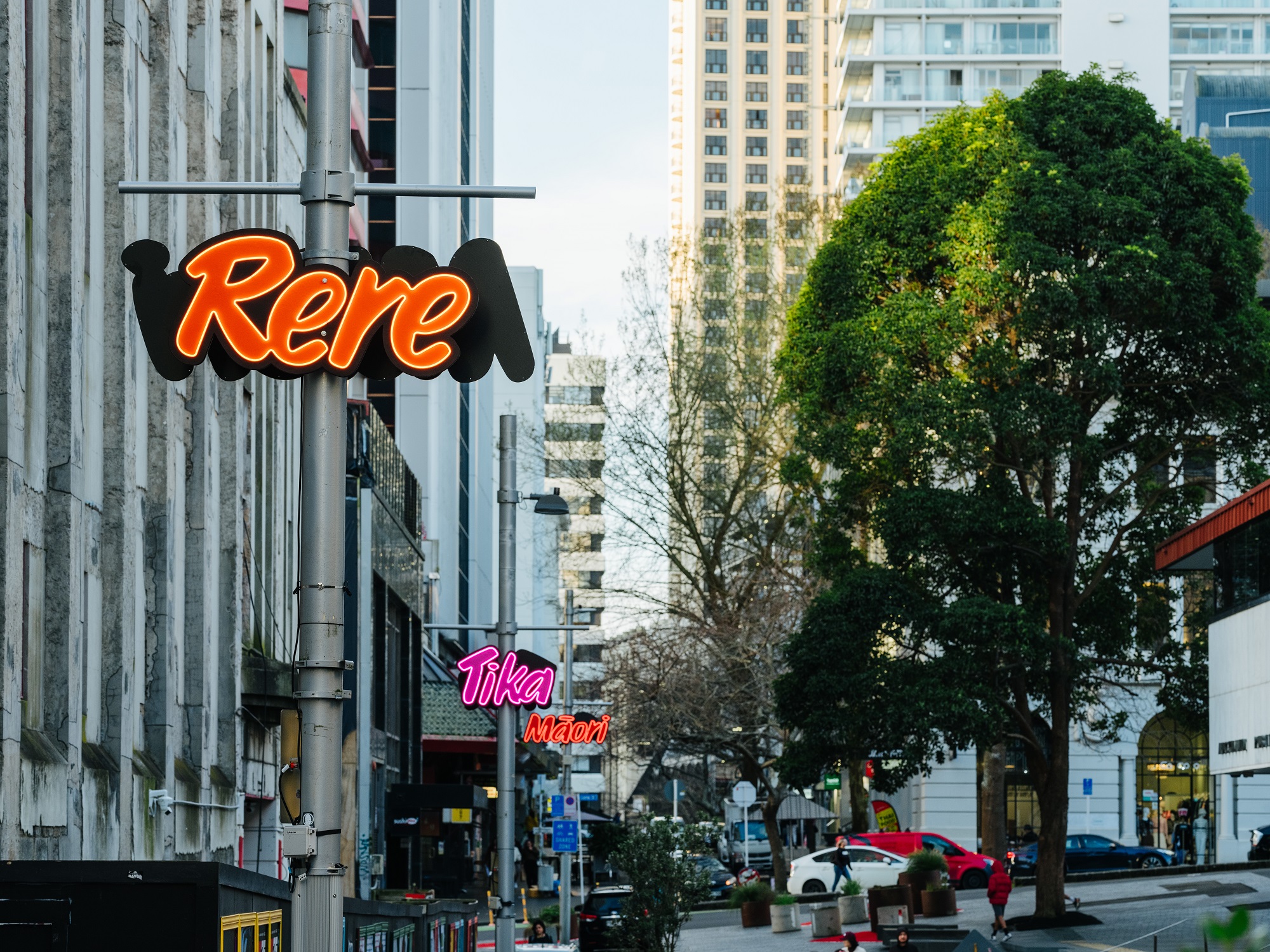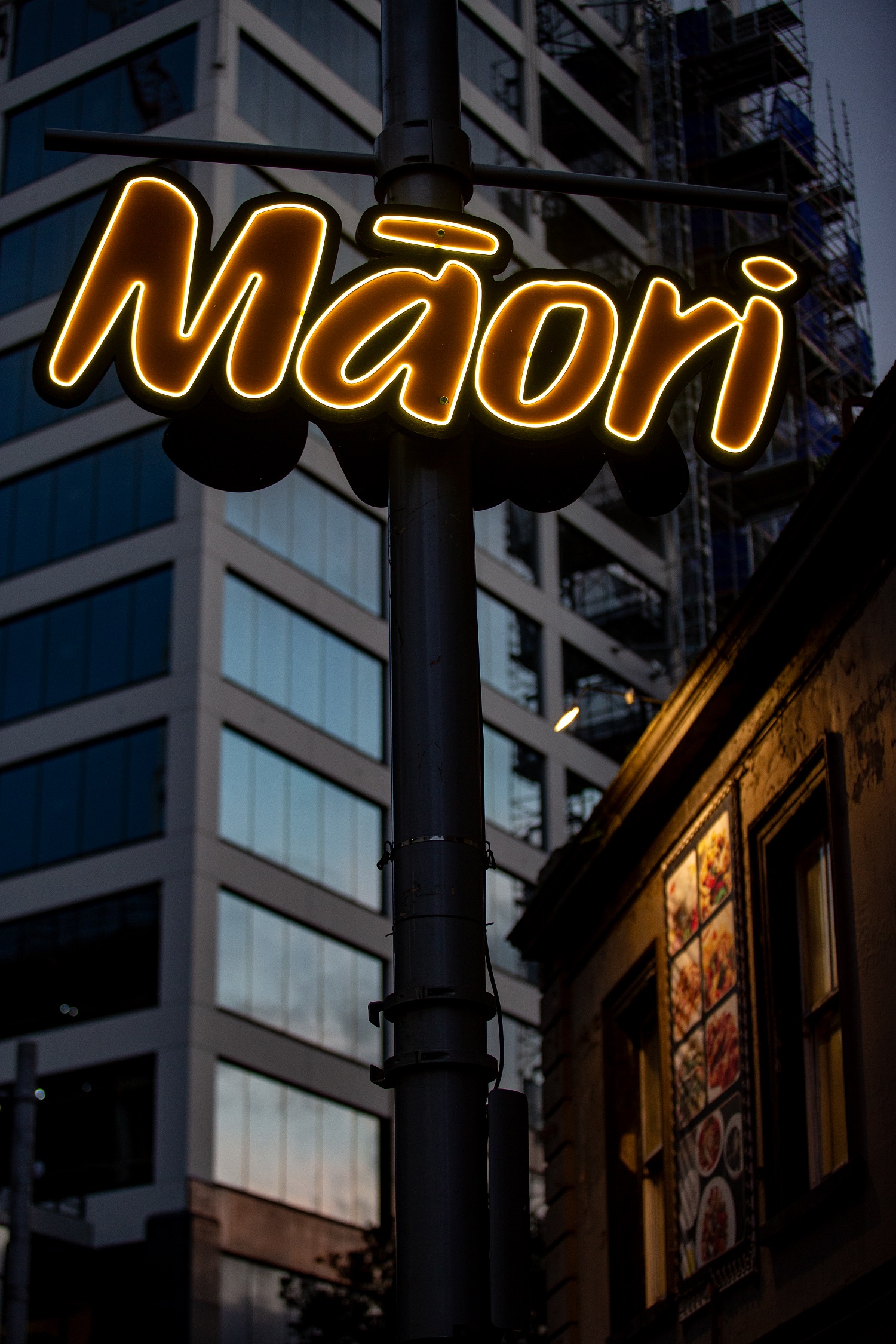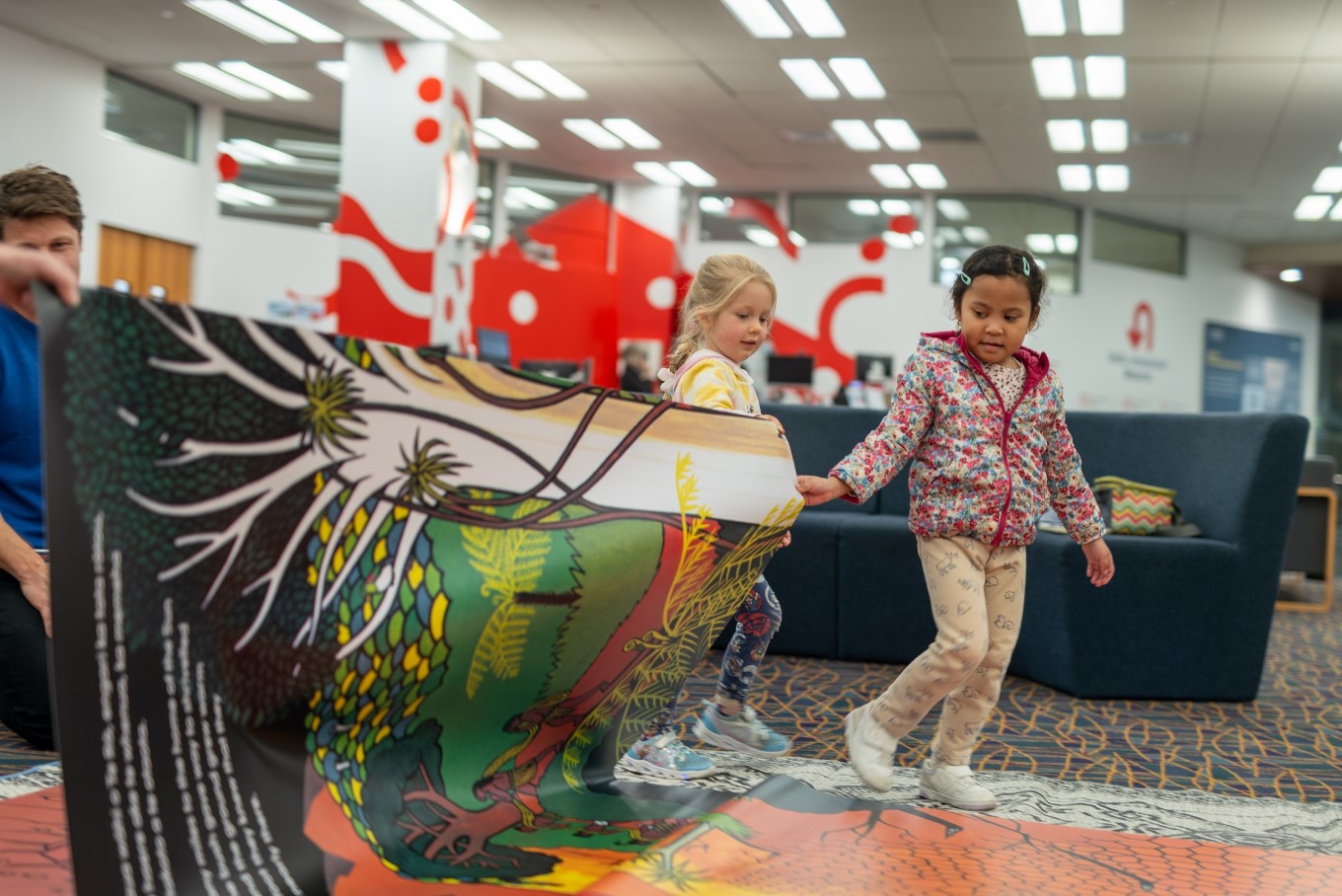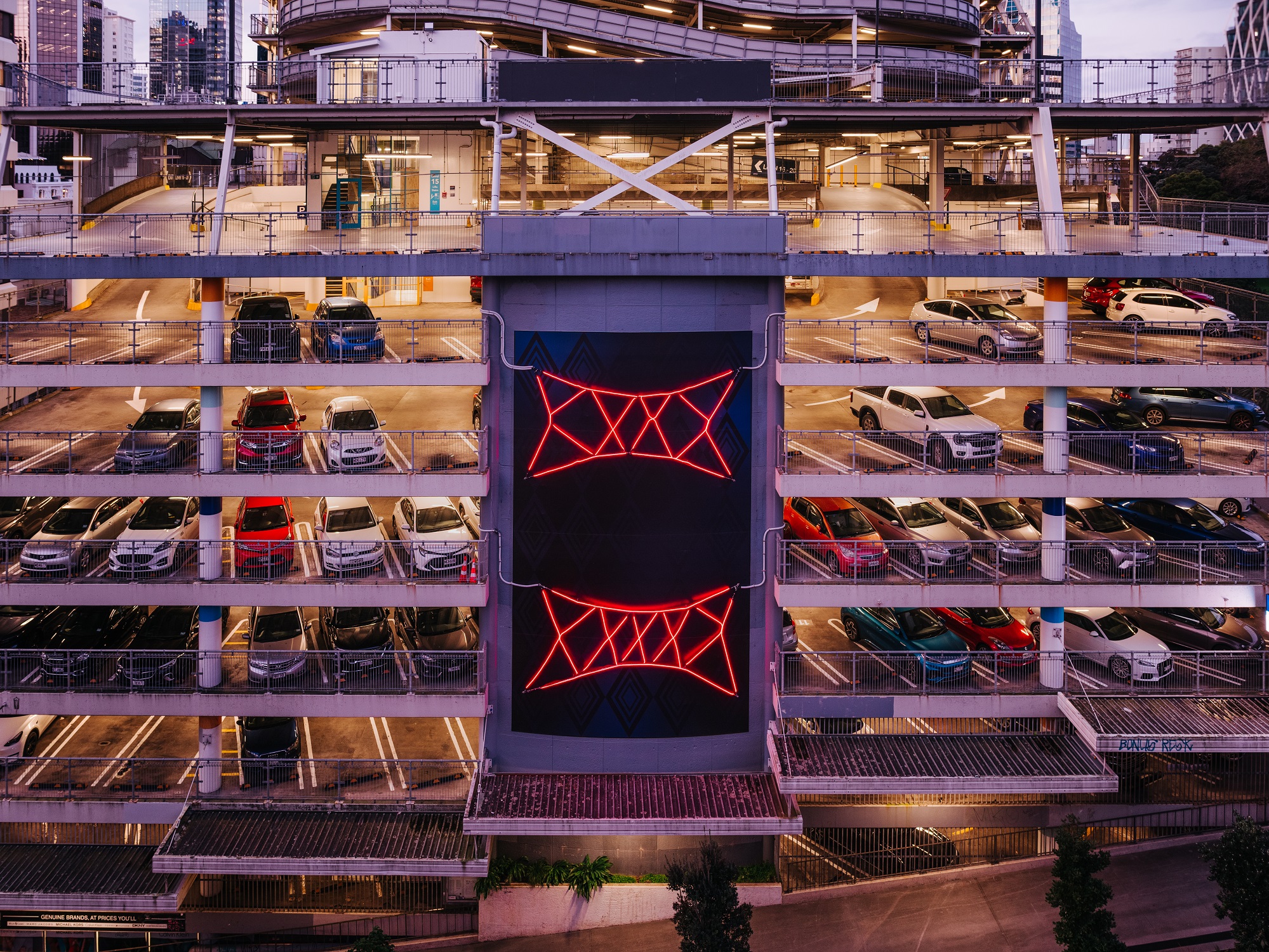Streets, squares and the pages of a giant book are all becoming a large-scale canvas for te reo Māori kupu (words), celebrating Te Wiki o Te Reo Māori and Mahuru Māori in Auckland’s city centre.
With Māori language and culture being our point of difference in the world, co-curator Ataahua Papa (Ngāti Korokī Kahukura, Ngāti Mahuta) explains that Aucklanders are fortunate to have the opportunity to engage with, to see and to hear te reo Māori across the heart of the city centre.
“With activations of light, words and a giant book celebrating and highlighting te reo Māori, we are honouring the call made in September 1972 for the recognition and revitalisation of te reo Māori.

“The call came from representatives of Ngā Tamatoa, Victoria University's Te Reo Māori Society, and the New Zealand Māori Students Association in the form of a petition with over 30,000 signatures.
“Many initiatives now combine to encourage people around Aotearoa to speak more reo Māori in a way that is comfortable for them, be it an hour a day, two hours a day, one day a week or immersion for the entire month of Mahuru - early September to early October in accordance with the Maramataka Māori,” Ataahua Papa says.
A programme of interactive ways Aucklanders can embrace te reo Māori in public places at the centre of town has been compiled by Auckland Council city centre place activation principal Barbara Holloway.
“Te Wiki o Te Reo Māori and Mahuru Māori are special times to celebrate Māori language. This extensive and joyous programme created with the Central City Library team offers numerous ways to learn and enjoy through movies, making, listening, learning, singing and playing,” she says.
Te Wiki o Te Reo Māori / Māori Language Week runs from 14 to 21 September aligning with the date the petition was delivered to Parliament.
The street-level programme and the elements of the Central City Library programme highlighted below are delivered by Auckland Council, enabled by the city centre targeted rate.
Here are our top six ways to expand your knowledge of te reo Māori:
New neon art lights up three symbolic kupu (words)
2 September – 30 October
44 – 46 Lorne Street, opposite Central City Library
From Monday 2 September, Aucklanders and visitors will see three 2-metre pieces of neon art on lamp posts in Lorne Street. They will light up three cornerstone kupu: Rere, Tika and Māori, referencing this whakatauākī (saying):
Ko te reo kia rere. Ko te reo kia tika. Ko te reo kia Māori.
Let the language flow. Let the language be correct. Let the language come from a te ao Māori worldview.
The creators of this striking new neon artwork, which references the permanent REO sculptural installation in Lorne Street, are Ataahua Papa (Ngāti Korokī Kahukura, Ngāti Mahuta) and Angus Muir Design for Auckland Council.

Giant book: ‘How Māui Slowed the Sun’
Giant book on display: 2 September – 30 September
Wriggle and Rhyme sessions for 2–3 year old children: Thursday 19 & 26 September, 11-11.30am; Sessions aimed at children from 3-5 years old: Saturday 14, 21, and 28 September, 11-11:30 am
It will take two or even three children to turn the pages. Come to the Central City Library from 2 September, through the main doors and witness a giant version of the Peter Gossage classic in te reo Māori and English. It is one of the most popular children's books in Aotearoa. The Gossage family and the publishers, Penguin Random House NZ, have given permission to recreate this beautifully illustrated picture book in a 1.5-metre by 1-metre scale. To bring the pages to life join Te Reo Māori Storytime on Friday 6, 13, 20 and 27 September, 11am-11.30am. Credit: Te Hopu a Māui i a te Rā / How Māui Slowed the Sun © Peter Gossage, translated by Merimeri Penfold, Penguin Random House NZ, 2020.

28 posters create a te reo Māori wall of inspiration
15 - 29 September
44 – 46 Lorne Street, opposite Central City Library
From 15 September look up on the wall across from the Central City Library in Lorne Street and see a series of whakataukī and whakatauākī (sayings and proverbs), poems in te reo Māori and English and song lyrics with photography featuring landmarks visible throughout Tāmaki Makaurau displayed along the wall. Hone Tuwhare’s poem ‘He motu te awa He awa koe’ (The river is an island) will feature alongside an image from Te Maharatanga o Ngā Wai (Remembering Our Waters), a pocket park on the corner of Victoria Street West and Sale Street where te reo can be seen, read, heard, and spoken through a QR code. Curator: Ataahua Papa. Photography: Te Rawhitiroa Bosch (Ngāpuhi, Ngāti Kahu, Pākehā). With thanks to The Hone Tuwhare Charitable Trust.
Neon art lights up Elliott Street
2 September – 16 October
Suspended above Elliott Street
These crochet- inspired neon spectacular artworks float above the street reflecting the street’s 500-year culinary history. The plinth opposite Darby Street tells the story in detail in both te reo and English. Learn more and read about the artists here.
Whai lights up in the red ink of a teacher’s pen
2 – 30 September
Victoria Street carpark building; view from Victoria Street East
Whai is a new artwork, originally for Matariki ki te Manawa, by Janine Williams (Ngāti Paoa, Ngāti Whātua ki Kaipara) connecting the stories handed down through generations to the creativity and innovation of current times. During Te Wiki o Te Reo Māori the lights of Whai will change from kikorangi (blue) to whero (red). The artist explains that the reclamation of language requires us all to reflect on our nation's history.

“The red ink of a teacher's pen signifies both encouragement and correction. This work responds to the challenges of the beautiful and often difficult journey of learning te reo Māori,” Janine says.
Learning te reo Māori through waiata
Imagine a soundtrack and light and sound effects bursting into song with you. Learning and singing waiata with tamariki is a fun way to learn new words in te reo Māori. Here is a new and exciting way to do it.
This seven-minute film will loop on the screen in the Central City Library and on the Auckland Live screen. Watch the film here. Wider story and the full creative team here. Learn the lyrics and tune of the two waiata here.
Waimahara is an interactive artwork by Graham Tipene (Ngāti Whātua, Ngāti Kahu, Ngāti Hine, Ngāti Hauā, Ngāti Manu) and a creative team deepening our connection to place. It describes the memory of water, specifically Te Waihorotiu, the stream flowing beneath the Myers Park underpass to Waitematā Harbour. Like the stream, this artwork is alive. It responds to the environment, weather and our presence by changing light patterns and sound. Aucklanders can actively engage with this experience by singing two special waiata into the sensor. These songs, Waimahara and Waiora, encourage reflection on the significance of water to human life.
Photos by David St George and Bryan Lowe.




